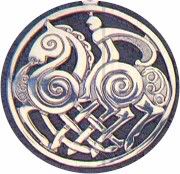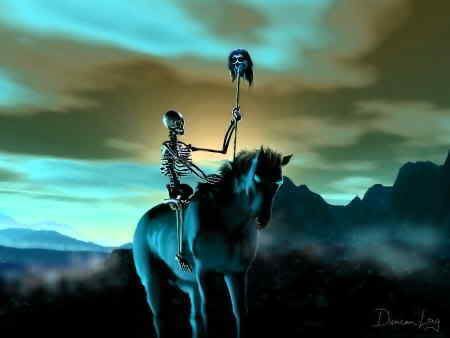Description of the Flag
The gonfalon was adopted on the 20th May 1975 and readopted with the coat of arms on the 3rd February 1995. The coat of arms is a sannitic shield, gules a Pegasus argent. The gonfalon is white with two narrow vertical red stripes, and the Pegasus in the middle. The words Regione Toscana appear under in silver. The Pegasus was the symbol of the Toscan National Liberation Committee during the Second World War.
--Pascal Vagnat, 22 September 1998
The white on red stripes are possibly derived from the red-white-red triband (the Austrian colours) adopted by Tuscany in the latter half of the 18th Century and dropped in 1848.
--Christopher Southworth, 14 September 2003
The pegasus image on the flag, gonfanon and arms has been taken from a coin made by the Florentine artist Benvenuto Cellini (the one who made the famous Perseo statue) in 1537. This coin can be seen in the National Museum of Bargello in Florence. White and red have been the traditional colors of Toscana since long time, not only during the Grand-Ducal period. Also note that white and red are the traditional colors of most Tuscan towns, including Firenze, Pistoia, Lucca, Pisa and Grosseto.
 |
| Pegasus |
Pegasus (Wikipedia)
Pegasus (Ancient Greek: Πήγασος, Pégasos, Latin Pegasus) is one of the best known mythological creatures in Greek mythology. He is a winged divine stallion usually depicted as pure white in colour. He was sired by Poseidon, in his role as horse-god, and foaled by the Gorgon Medusa. He was the brother of Chrysaor, born at a single birthing when his mother was decapitated by Perseus. Greco-Roman poets write about his ascent to heaven after his birth and his obeisance to Zeus, king of the gods, who instructed him to bring lightning and thunder from Olympus. Friend of the Muses, Pegasus is the creator of Hippocrene, the fountain on Mt. Helicon. He was captured by the Greek hero Bellerophon near the fountain Peirene with the help of Athena and Poseidon. Pegasus allows the hero to ride him to defeat a monster, the Chimera, before realizing many other exploits. His rider, however, falls off his back trying to reach Mount Olympus. Zeus transformed him into the constellation Pegasus and placed him up in the sky.
Hypotheses have been proposed regarding its relationship with the Muses, the gods Athena, Poseidon, Zeus, Apollo, and the hero Perseus.
The symbolism of Pegasus varies with time. Symbol of wisdom and especially of fame from the Middle Ages until the Renaissance, he became one symbol of the poetry and the creator of sources in which the poets come to draw inspiration, particularly in the 19th century. Pegasus is the subject of a very rich iconography, especially through the ancient Greek pottery and paintings and sculptures of the Renaissance. Personification of the water, solar myth, or shaman mount, Carl Jung and his followers have seen in Pegasus a profound symbolic esoteric in relation to the spiritual energy that allows to access to the realm of the gods on Mount Olympus.
White horse (mythology) [Wikipedia]
White horses (which are rarer than other colours of horse) have a special significance in the mythologies of cultures around the world. They are often associated with the sun chariot, with warrior-heroes, with fertility (in both mare and stallion manifestations), or with an end-of-time saviour, but other interpretations exist as well. Both truly white horses and the more common grey horses, with completely white hair coats, were identified as "white" by various religious and cultural traditions.
 |
| The flag of Tuscany |
Mythologies and traditions
European
Celtic
In Celtic mythology, Rhiannon, a mythic figure in the Mabinogion collection of legends, rides a "pale-white" horse. Because of this, she has been linked to the Romano-Celtic fertility horse goddess Epona and other instances of the veneration of horses in early Indo-European culture.
White horses are the most common type of hill figure in England. Though many are modern, the Uffington White Horse at least dates back to the Bronze Age.
In Scottish folklore, the kelpie or each uisge, a deadly supernatural water demon in the shape of a horse, is sometimes described as white, though other stories say it is black.
Greek
In Greek mythology, the white winged horse Pegasus was the son of Poseidon and the gorgon Medusa. Poseidon was also the creator of horses, creating them out of the breaking waves when challenged to make a beautiful land animal.
 |
| Sleipnir |
Norse
In Norse mythology, Odin's eight-legged horse Sleipnir, "the best horse among gods and men", is described as gray. Sleipnir is also the ancestor of another gray horse, Grani, who is owned by the hero Sigurd.
Slavic
In Slavic mythology, the war and fertility deity Svantovit owned an oracular white horse; the historian Saxo Grammaticus, in descriptions similar to those of Tacitus centuries before, says the priests divined the future by leading the white stallion between a series of fences and watching which leg, right or left, stepped first in each row.
Finno-Ugric
The war god in Hungarian mythology was Hadúr, who wears pure copper and is a metalsmith. The ancient Magyars sacrificed white stallions to him before a battle. Additionally, there is a story (mentioned for example in Gesta Hungarorum) that conquering Magyars paid a white horse to Moravian chieftain Svatopluk I (in other forms of the story, it is instead the Bulgarian chieftain Salan) for a part of the land that later became the Kingdom of Hungary.[citation needed] Actual historical background of the story is dubious because Svatopluk I was already dead when the first Hungarian tribes arrived. On the other hand, even Herodotus mentions in his Histories an Eastern custom, where sending a white horse as payment in exchange for land means casus belli. This custom roots in the ancient Eastern belief that stolen land would lose its fertility.
 |
| The Pale Horse - Death |
The Four Horsemen of the Apocalypse are described in the last book of the New Testament of the Bible, called the Book of Revelation of Jesus Christ to Saint John the Evangelist at 6:1-8. The chapter tells of a "'book', or 'scroll', in God's right hand that is sealed with seven seals". The Lamb of God, or Lion of Judah (Jesus Christ), opens the first four of the seven seals, which summons four beings that ride out on white, red, black, and pale horses. Although some interpretations differ, in most accounts, the four riders are seen as symbolizing Conquest, War, Famine, and Death, respectively. The Christian apocalyptic vision is that the four horsemen are to set a divine apocalypse upon the world as harbingers of the Last Judgment.
White Horse
I watched as the Lamb opened the first of the seven seals. Then I heard one of the four living creatures say in a voice like thunder, "Come and see!" I looked, and there before me was a white horse! Its rider held a bow, and he was given a crown, and he rode out as a conqueror bent on conquest.
--Revelation 6:1-2
Due to the above passage (the most common translation into English), the white rider is referred to as Conquest (not Pestilence, see below). The name could also be construed as "Victory," per the translation found in the Jerusalem Bible (the Greek words are derived from the verb νικάω, to conquer or vanquish). He carries a bow, and wears a victor's crown.
As evil
Artwork which shows the horsemen as a group, such as the famous woodcut by Albrecht Dürer, suggests an interpretation where all four horsemen represent different aspects of the same tribulation.
The first horseman is often associated with military conquest. One interpretation, which was held by evangelist Billy Graham, casts the rider of the white horse as the Antichrist, or a representation of false prophets, citing differences between the white horse in Revelation 6 and Jesus on the white Horse in Revelation 19. In Revelation 19, Jesus has many crowns, but in Revelation 6 the rider has just one.
As righteous
Irenaeus, an influential Christian theologian of the 2nd century, was among the first to interpret this horseman as Christ himself, his white horse representing the successful spread of the gospel. Various scholars have since supported this notion, citing the later appearance, in Revelation 19, of Christ mounted on a white horse, appearing as The Word of God. Furthermore, earlier in the New Testament, the Book of Mark indicates that the advance of the gospel may indeed precede and foretell the apocalypse. The color white also tends to represent righteousness in the Bible, and Christ is in other instances portrayed as a conqueror. However, opposing interpretations argue that the first of the four horsemen is probably not the horseman of Revelation 19. They are described in significantly different ways, and Christ's role as the Lamb who opens the seven seals makes it unlikely that he would also be one of the forces released by the seals.
Besides Christ, the horseman could represent the Holy Spirit. The Holy Spirit was understood to have come upon the Apostles at Pentecost after Jesus' departure from Earth. The appearance of the Lamb in Revelation 5 shows the triumphant arrival of Jesus in Heaven, and the white horseman could represent the sending of the Holy Spirit by Jesus and the advance of the gospel of Jesus Christ.
Globalist/UN Ideology
"We are in charge of God's selection process for planet Earth. He selects, we destroy. We are the riders of the Pale Horse, death. We do this for the sake of the world."
--Barbara Marx-Hubbard
Barbara Marx-Hubbard couldn't fight her way out've a wet paper bag, but the forces behind words should be taken seriously. However, this is an example of the "White Horse" symbology used within a Biblical meaning.
Other
WHITE HORSE - linked to instinct, purity and the drive of the physical body to release powerful and emotional forces, like rage with ensuing chaos and destruction.
--Excerpt from 'The Subconscious Psychosis of Dreams'
.

